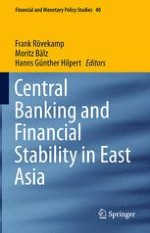2015 | OriginalPaper | Buchkapitel
Demand and Supply of Shadow Banking in China
verfasst von : Xuechun Zhang, Patrick Hess
Erschienen in: Central Banking and Financial Stability in East Asia
Aktivieren Sie unsere intelligente Suche, um passende Fachinhalte oder Patente zu finden.
Wählen Sie Textabschnitte aus um mit Künstlicher Intelligenz passenden Patente zu finden. powered by
Markieren Sie Textabschnitte, um KI-gestützt weitere passende Inhalte zu finden. powered by
